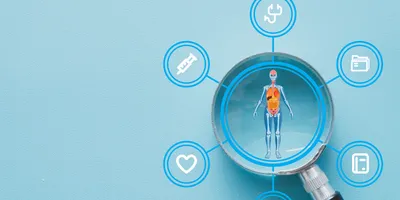The National Institutes of Health (NIH) has launched a landmark whole-person health research initiative designed to model how the body’s systems function together to sustain well-being. The five-year project will build the Whole Person Reference Physiome, a unified framework connecting anatomy, physiology, and function through advanced data integration and physiological modeling.
Unlike traditional biomedical studies focused on individual organs or diseases, NIH whole-person health science emphasizes the interconnectedness of multiple systems. For example, lifestyle interventions that include a balanced diet, regular physical activity, and stress management can simultaneously improve cardiovascular, metabolic, and musculoskeletal function—demonstrating the value of integrative research in understanding health holistically.
“Biomedical research is largely organized around the study of specific organs and diseases. In contrast, we do much less research on health itself,” said Helene M. Langevin, MD, director of the National Center for Complementary and Integrative Health (NCCIH), which is leading the program.
Building a unified model of human physiology
The whole-person health research effort will draw on extensive datasets to develop an integrated human physiology network. Early stages will combine resources such as the NIH Human Reference Atlas and the Human BioMolecular Atlas Program (HuBMAP) to create a digital map of healthy human function.
This comprehensive framework will connect common clinical measures—such as blood pressure, glucose levels, and cholesterol—to larger physiological processes. Over time, it will evolve into an interactive model capable of identifying patterns in health maintenance and decline.
“By organizing healthy physiological function into a whole-body knowledge network, researchers will be able to explore scientific questions about health in a new way,” said Langevin. “The Whole Person Reference Physiome will lay a foundation for understanding the factors that drive declines in health and mechanistic pathways to restoration.”
Integrative research drives scientific collaboration
The NIH whole-person health initiative exemplifies how integrative research and systems biology can accelerate scientific discovery. By merging data across diverse domains, researchers can better visualize how physiological systems influence each other and develop more predictive models of disease prevention.
For laboratories contributing to physiological modeling and data analysis, this shift toward interoperability highlights the growing need for standardized data formats, metadata alignment, and cross-platform collaboration. It also encourages multidisciplinary teams—spanning genomics, bioinformatics, and clinical research—to work together on shared frameworks for human physiology network design and maintenance.
Lab Safety Management Certificate
The Lab Safety Management certificate is more than training—it’s a professional advantage.
Gain critical skills and IACET-approved CEUs that make a measurable difference.
What this means for laboratory managers
For laboratory managers, whole-person health research signals a broader move toward data-driven, collaborative science. As NIH invests in large-scale systems biology initiatives, labs will need to strengthen data stewardship practices and adopt flexible infrastructures capable of supporting cross-institutional projects.
This initiative underscores the importance of integrative research in modern laboratory operations—connecting clinical metrics, biological data, and environmental factors to better understand human health. Labs that develop or maintain datasets compatible with the human physiology network may find new opportunities for funding, collaboration, and translational research impact.
Editor’s note: At the time of publication, US government operations were affected by a shutdown that may delay or pause progress on this NIH initiative.
This article was created with the assistance of Generative AI and has undergone editorial review before publishing.












